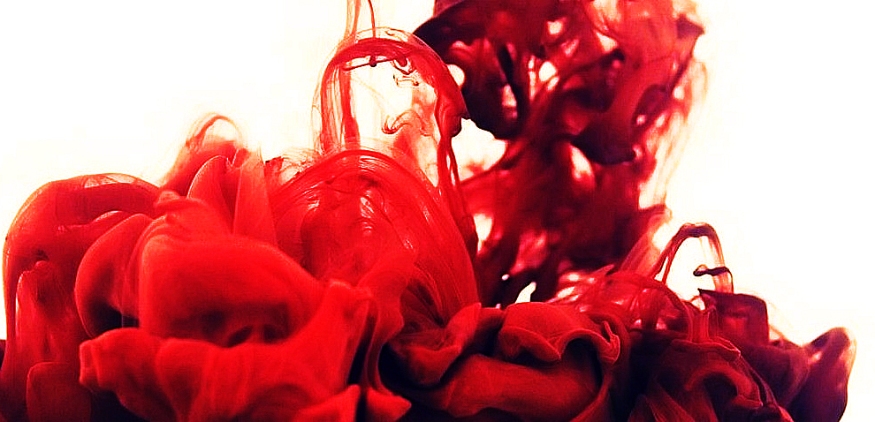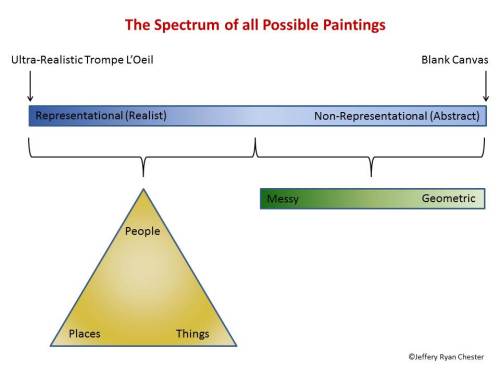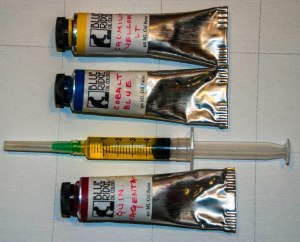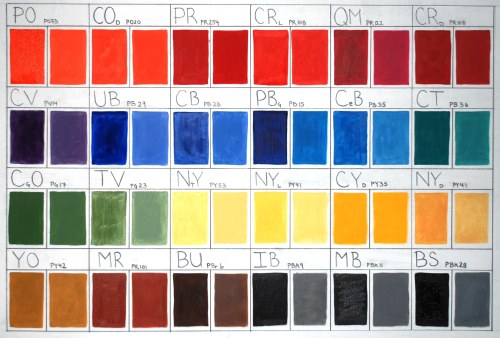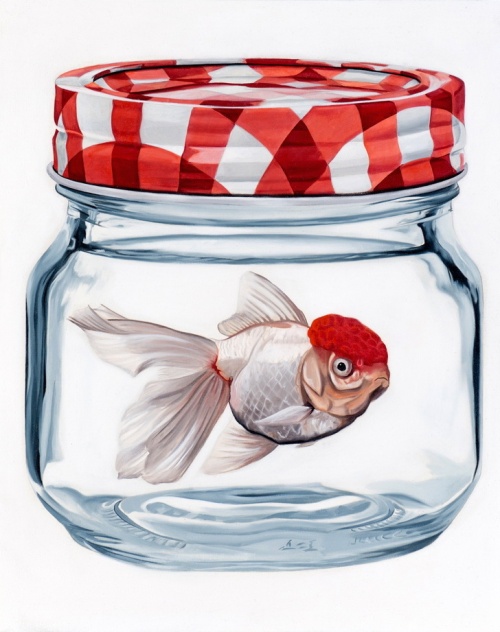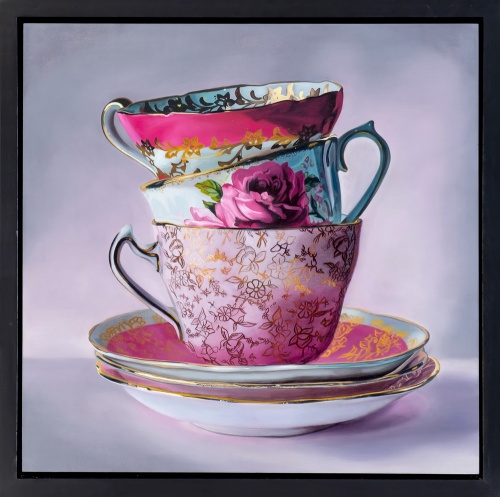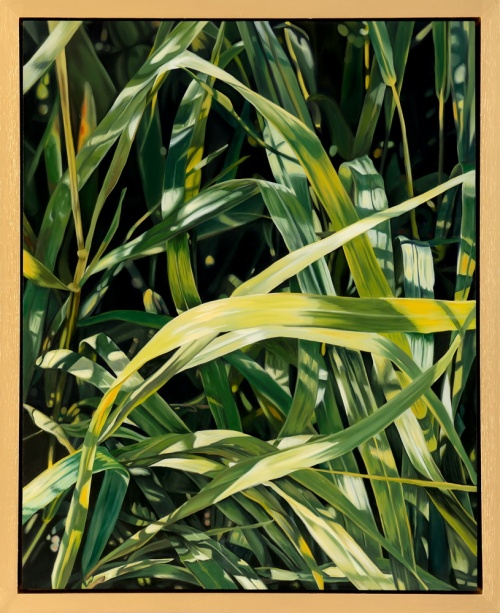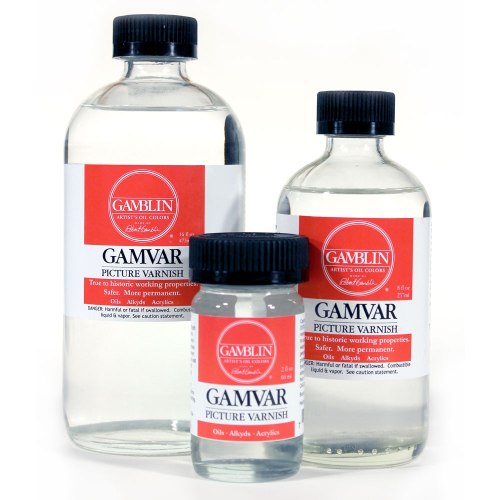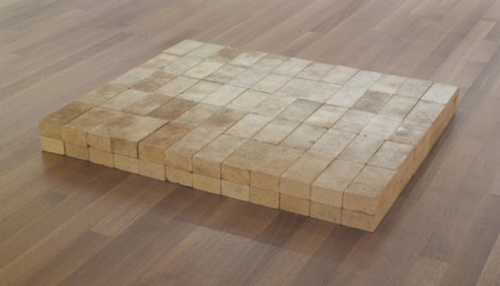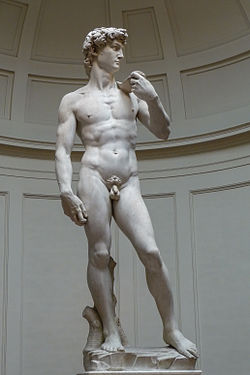
Edited 19 April 2018 – Updated info on Williamsburg Oils and a move for them to my #2 spot.
Over the years I’ve collected quite a few tubes of paint from several different manufacturers. I haven’t tried them all, just those that I thought would work with my style of painting. I am not paid by any of these paint makers and have no stock in any of their products. This is just my opinion as an artist. If you are less-than-expertly knowledgeable about how oil paints are made and what they consist of I would suggest that you start by looking at Tony Johansen’s webiste: www.paintmaking.com
First, I’ll list the attributes that I look for in a good oil paint:
Oil used: There are only two oils that I would consider using as the base for the creation of a durable painting: Linseed oil and Walnut oil. Linseed oil is the industry standard and for good reason. It creates the strongest film and drys relatively fast when compared to other drying oils. Walnut oil is a good alternative to linseed oil. It does not form quite as strong of a film as linseed, however it will yellow less over time and gives paint a juicy, brushable quality. Walnut oil, although slower drying than linseed, is still faster than other oils. Ideally the best paint would be made from a mix of the two in an attempt to get the best of both and reduce each others negative qualities. Some manufacturers use poppy and safflower oils in their paints, particularily in the lighter colours and whites. They do this because poppy and safflower oils yellow less than linseed oil in the short term. However they are much slower drying, and do not form as strong of a film and so I don’t typically use paints made with these oils except in the final layers with the addition of some sort of alkyd medium to improve strength. I should note here that eventually all oil paint films are going to crack, it’s just a matter of when.
Pigment info: Most professional quality paint manufacturers are good about listing the pigments in the tube. They do this either on the tube itself which is ideal, or on their webpage. If a manufacturer doesn’t state the pigments used in the paint anywhere then beware! Each pigment has it’s own special characteristics that include drying time, transparency, tinting strength, and hue bias. Knowing the properties allows you to come to informed decisions about the pigments that make up your palette. Some pigments cost more than others, so it is good to know what you are paying for. Taking a gamble on a paint manufacturer that doesn’t list pigments is likely to end in disappointment. For detailed information on specific pigments beyond what is listed on paintmaking.com there are a couple of terrific sites:
www.artiscreation.com
www.handprint.com
Brushability: In what I consider the ideal paint the mixture that comes out of a tube should be soft and workable. Not soupy and runny, and not stiff and dry. Different artists will have a preference for different qualities in this regard and most of that is determined by how thickly you like to apply paint to the canvas.
Transparency: I am not talking about the characteristics of the pigments here, I am talking about the information given out by the manufacturer and how open they are to honest discussion should you have questions. Although there are standards put in place like ASTM D4302 these are entirely voluntary and there is no enforcement of these standards. This means that artists are left to try and figure out whose information and product they trust the most. First off, people would not be selling paint if they didn’t want to make money at it. That should be a given so there should always be some skepticism when dealing with manufacturer statements. You need to be wary of the marketing romance and stick to the facts and scientific evidence. So where do you start here? Well, I look for the company to be led by an artist. If they don’t have any experience painting there is no way they will be able to put the kind of passion and time into the creation of a paint that is required to make something a real artist will love.
Lightfastness: Almost all paint manufacturers still produce Alizarin Crimson (PR83:1). This is because there is still a high demand from artists in general. If you look at any “how-to-paint” book they will most likely recommend Alizarin Crimson for a basic palette. Because of this I can forgive novice painters for buying it and manufacturers for making it. It is indeed a beautiful and useful colour right out of the tube. However, it is what is called a “fugitive” colour in terms of how it stands up to the test of time with regards to it’s colour strength. There are many other pigments that can easily fill the role of Alizarin Crimson and I will talk about those in an upcoming post on what pigments should be on your palette. So, as I said I can forgive manufacturers for still producing Alizarin Crimson. What I can’t forgive however, is when they produce a line of paints full of pigments with poor lightfastness ratings. If they have lots of paints with an ASTM lightfastness rating of 2 or worse that should be a sure sign that the company isn’t overly concerned about the longevity of your work. This can also be said about a company that puts out the majority of it’s colours as mixes of 2 or more pigments. Although some mixes can be really convenient and useful, having an entire line of mixes smells of marketing B.S. more than it smells of linseed oil.
Price: You are going to pay more for a quality paint than for a student grade paint. More pigment in a tube costs more money to make than less pigment. That is certain. However, beyond a certain point you will be paying only for the name and for the marketing romance. This can be seen in many industries, but is probably most obvious in the clothing and accessory world. Many people will pay more money for the same product if it has a certain brand stamped on it. Watch for this because it exists in the world of paints as well. Extremely good paint can be found for a decent price.
Tube quality: I hate it when caps split or tubes break open and paint oozes all over my other tubes. This can be messy and costly and so I prefer to buy paint that comes in decent packages.
The following list is what I consider great paint. I won’t include certain lines that make the tops on many peoples lists because they don’t meet the criteria above (Blockx for example uses poppy oil and so I’ve never used it cause it would dry way too slow for me)
Blue Ridge Artist Colors: In my opinion this is tops. Made in North Carolina by a guy named Eric Silver, Blue Ridge paint meets almost every aspect of what I consider a terrific paint. Eric uses a blend of linseed and walnut oil to mix almost all of his colours (except for his whites which are walnut/safflower). They are blended to a smooth, brushable consistency. Pigment and paint information is readily available on the website. The vast majority of colours that Eric has chosen for his line are lightfastness I. The tubes he uses have not given me any trouble what-so-ever. I really enjoy the wider mouth on them as well. You can’t buy these paints in store, only online through their website. This is not really that inconvenient however as the service is extremely fast and Eric takes such good care at packaging the paint that it has arrived in perfect condition. In fact the tubes I have received were each individually wrapped in bubble wrap and placed in a box just big enough to keep them snug so they didn’t rattle against each other in transit. I am a paint geek. I love every little nuance about paint and using quality materials really affects how I feel about creating. So when paint shows up in pristine condition along with a colour chart and a little thank you note like it does from Blue Ridge I just know that he “gets it”. I’ve ordered a few times now and each time my order was acknowledged, filled and shipped within two days. I have to pay for international shipping as I am Canadian but the quality and price of the paints is more than reasonable enough to make it worth it. The colours are very highly pigmented and the pigments chosen are very beautiful. The majority of my palette is made up of Blue Ridge oil paint. There is a great video of Eric making paint in his workshop that can be viewed here.
Williamsburg Handmade Oil Paint: Williamsburg is a great brand of oil paint. They are a pricier paint which is a detractor, though I don’t think they are necessarily excessively expensive (unlike Old Holland and Vasari). They do have a great selection of earth colours if you are an earth colour junkie and a couple of different Terre Vertes (PG23) which happens to be my favourite oil colour. One thing that used to bother me, that they have recently addressed, has to do with Zinc White. They used to use Zinc in a lot of their mixtures but recently removed it from their lineup. A very smart move in my opinion and that goes a long way to showing me that they are really trying to make a quality product for artists to use. They are also concerned with lightfastness ratings and have made changes in the past to address any issues they have found. Overall I rate Williamsburg as an excellent paint, only falling to #2 on my list due to the price point.
Gamblin: Gamblin is a solid brand. I have written to them before and they were very quick to respond and answered my questions clearly and fully. Gamblin paint is widely available and this makes it a great choice for those looking for ease of purchase or hunting for the best price. Gamblin paints are slightly softer than Blue Ridge. This could be a big problem however if you want to create thick sticky impasto passages. Of all the paint brands I’ve tried I would say on the whole Gamblin has chosen the most beautiful pigments out there. For this reason I buy Gamblin paints for many of my transparent colours. I have never had any issues with Gamblin tubes. If you were only going to use a single brand of paint to fill out your entire palette then in my opinion the Gamblin lineup has a few flaws. The use of Napthol Reds instead of the more lightfast Pyrrol reds leaves a gap in the spectrum for me and the same with the use of Hansa yellows instead of the superior Benzimidazalone yellows. Overall though I think Gamblin paint is a great brand which is good enough for professional use but affordable enough for student use. Robert Gamblin’s vision for paintmaking can be seen in this video.
Rembrandt Oil Colours: Rembrandt is a good brand of paint overall. Their paints are all have excellent lightfastness. The paint is very soft and brushable right out of the tube. If you love natural earth colours then this is not the brand for you. Their earth colours are actually made up of mixes of synthetic iron oxide pigments and ivory black. My guess for doing this is that they are concerned about mining practices or a tendency for umbers to darken over time but I haven’t actually seen this written anywhere. The biggest negative about these paints is the tubes. They seem to be much too thin and I have several that have burst open on me. You can usually get a good deal at dickblick.com for these paints and so I would highly recommend them to budget concious artists and students. If you are looking for a good selection of colours around the colour wheel and yellows and reds in transparent versions Rembrandt has you covered.
Winsor & Newton Artist Oil Colors: Winsor Newton is a good brand. You can find these paints pretty much anywhere. If there is only one brand of artist oil paint in an art store you can bet it is probably Winsor Newton. They have a good range of colours, are nice to work with out of the tube, and are generally very nice hues. The only negative for me about Winsor Newton is that the company is too big. The paint is made on a production line and machines do much of the work. Although this gives them lots of opportunity for reproducible quality control it also puts a distance between the maker and the product. I just don’t feel as though as much love and thought has gone into this product. I’m going to admit that this seems like a silly thing to say, but it does affect how I feel about working with the paint. Rationally speaking I think the paint is fine and so if this kind of touchy feely thing doesn’t bother you I think you will find that this paint makes for a solid choice you could use with confidence.
Michael Harding Handmade Artist Oil Paint: In the recent past Michael Harding has had an issue with the caps splitting on their tubes, but they will send you replacement caps should you require them. There are a few paints that I love from Michael Harding. Their Terra Verte is the most beautful of the ones I’ve tried and is my staple transparent earth green paint. Harding’s Permanent Orange (PO73) is a lovely brilliant colour that is very strong and very useful. As well, they make a Lead White/Titanium White blend ground in linseed oil which is great. Michael Harding makes a few unique colours that you can’t find anywhere else. Their Genuine Naples Yellow Light is a fast drying light primary yellow I use which is worth the price in my opinion. It is a rarer pigment and also most yellow pigments are very slow drying. I haven’t had a chance to try their Genuine Vermillion or Genuine Lapis Lazuli but from the colour swatches on their website I would say both are easily mixed with much less expensive colours and are not special enough to justify spending $100 on a 40ml tube of paint. I am perplexed by some of the choices of pigments in this range of paints as well as the rationale behind chosing them. For instance if you read the description of his Alizarin Crimson he talks about uptight Americans poo-pooing the pigment because of it’s lightfastness and how they should relax yet for his Crimson Lake paint (PR149) he says he is looking into a new pigment to replace it due to it’s lightfastness even though it is lightfastness 1 in mass tone and 2 in tints. Overall I pick and choose from this line of paints as he does make a few good ones.
Old Holland: There is only one colour from Old Holland that I think is better than other brands and that is their Manganese Blue (PB33). This is only because they are one of the only ones to still produce any since the pigment is no longer manufactured. I saw a comment online from someone stating that they had bought a large enough quantity that they should be good for 100 years of production but when I emailed the company months ago asking to verify this I got no reply. The price of the paints is much too high for what you get. Don’t get me wrong, the paint is good, and if you like a really really stiff paint then you will love the texture, but in my opinion they are not worth the price you have to pay for them. If you want to try them out start out with a few of the A series colours to get an idea as they are reasonably priced. I have a couple of the cadmiums and cobalts and I have to say that they are no better than Blue Ridge paints which happen to be half the price. Another thing I don’t like about Old Holland paints is that they give a blanket lightfastness to their line (they say 7 or 8 on a 1-8 scale where 8 is best) that does not fall in line with ASTM testing (or any other manufacturers testing for that matter) of the pigments. They also make way too many mixtures and useless colours. It seems to me they are just catering to those with a fetish for collecting every tube of paint they make. If you like a really stiff paint then these are for you but overall you can get more beautiful hues, the same amount of pigment, and more honesty for less money elsewhere.
Vasari Classic Artist Oil Colors: I haven’t used any of Vasari’s colours. This is because I find their prices are astronomical, and their information and customer service is severely lacking. On their website you will notice that as you look at each colour you will only find the pigment information for a few. This information it appears is only for the single pigment paints. I wrote them an email to ask if I could see a chart or get information on their pigments in all of their paints. They didn’t respond to that email, but I know they got it because they added me to their distribution list for their mass emails. I sent another email about 3 months after the first one thinking maybe they just forgot to respond but yet again no response. I know that David Kassan swears by these paints, but I just can’t help but think that no matter how good they are these must be the most over priced paints out there. For instance you will pay $68.25 US dollars for a 40ml tube of their Cerulean Blue. The kicker is that it isn’t even a PB35, they use the cheaper PB36 and still charge the big bucks for it. A 40ml tube of their ivory black will run you almost 21 dollars. Insanity. Vasari is the Gucci of the paint world.

